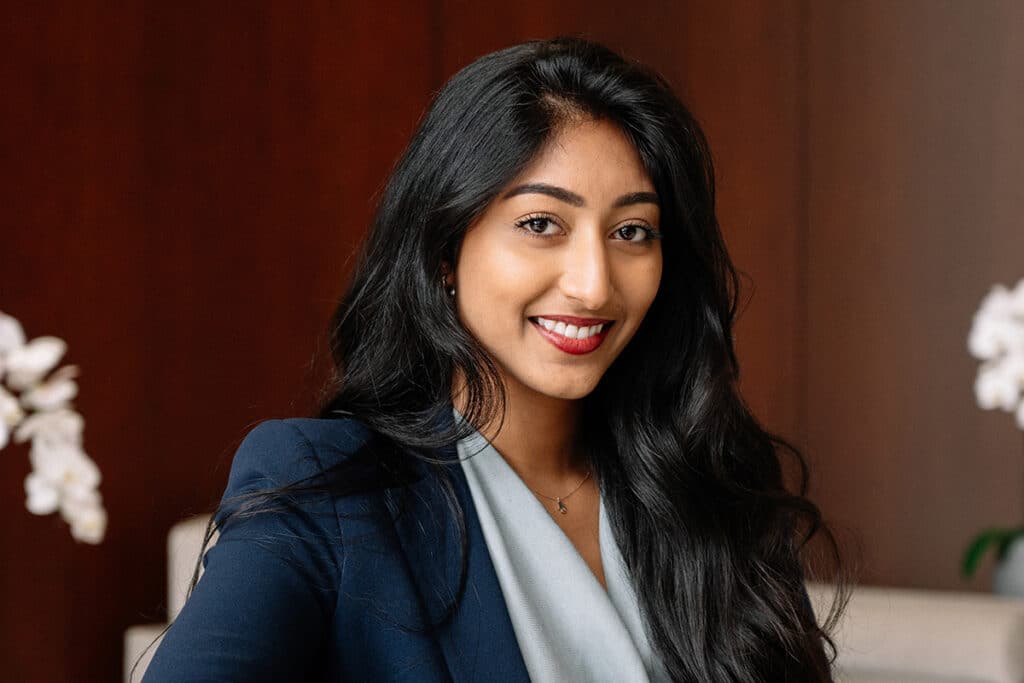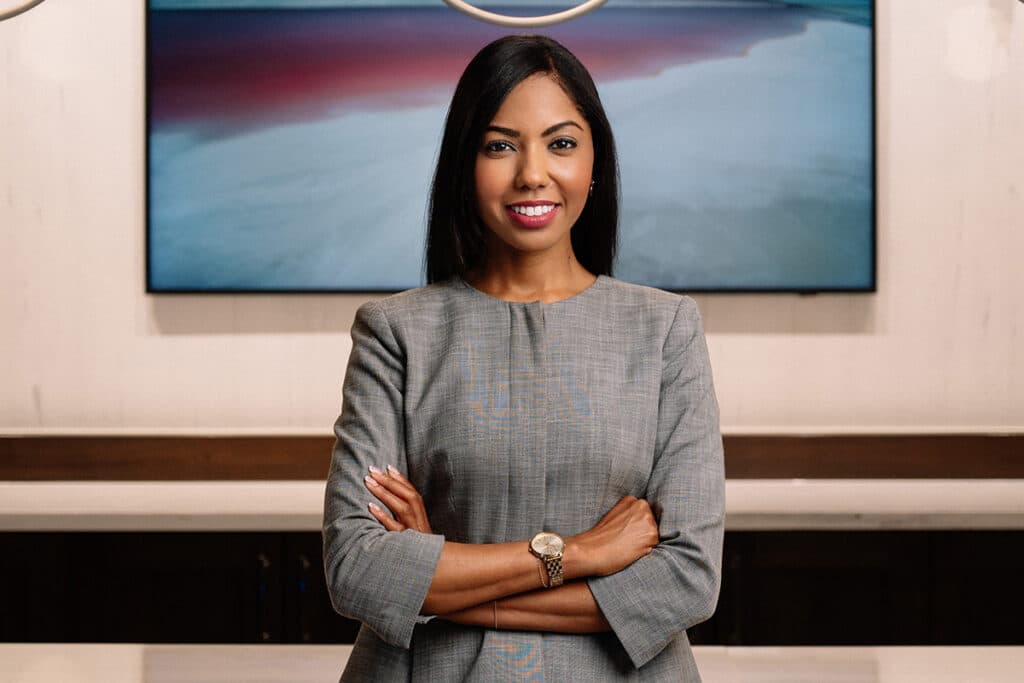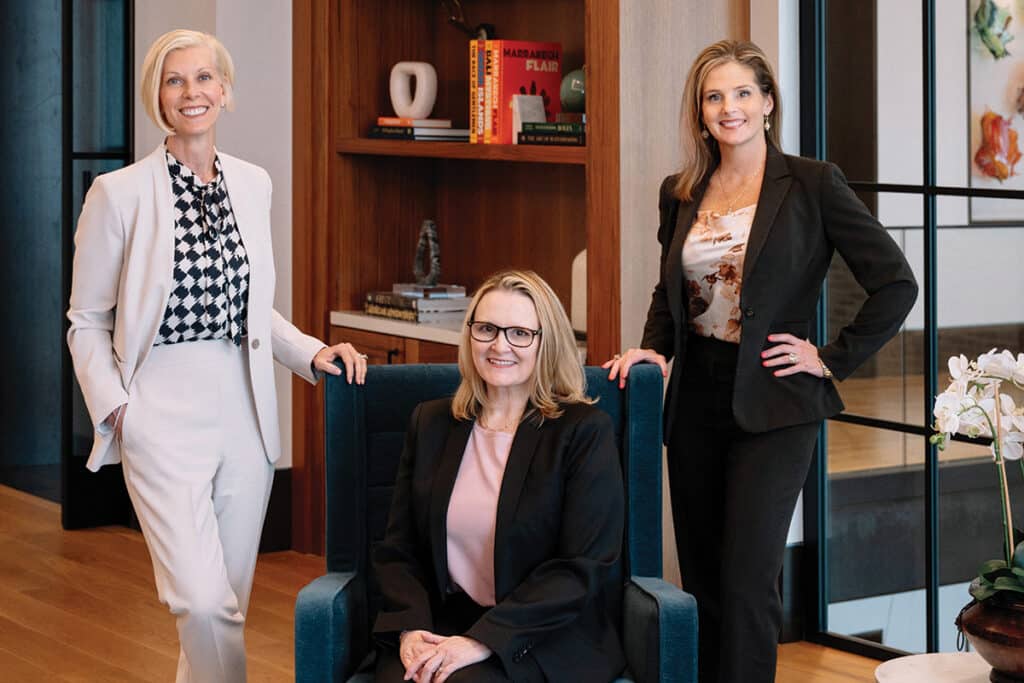A smile is one of the first things humans notice about each other. In fact, research shows that an attractive smile is key to personal and professional success. A nice smile includes a mouthful of healthy teeth. Enter the dentist.
As with so many other professions, women changed the face of dentistry in the late 20th century. Today, about half of all dentists are women, a figure that parallels women’s presence in other medical fields.
Like medical doctors, would-be dentists have a lengthy education ahead of them — eight years post-high school, on average. Dental school requires four years of study, and specialty fields typically require additional studies and licensing. Beyond general dentistry, orthodontics and pediatric dentistry are two of the most common specialties, according to the U.S. Census Bureau.
For women who want to work in a medical field, dentistry offers some attractive benefits, not the least of which is flexibility and control over the work schedule — appealing to women who are juggling career and family.
San Antonians have the additional benefit of one of Texas’ leading dental schools. Many of the faculty at the University of Texas Health Science Center’s Dental School also put their expertise to work in private practice in the city.
Here you’ll read the stories of five local women who chose dentistry as a career:
Glory B. Marshall, DDS
-Alamo Heights Orthodontics
In Dr. Glory Marshall’s practice, she’s heard a lot of stories about what happens to retainers and other removable mouth appliances. “We have a ‘Retainer Disaster Hall of Fame’ here,” she jokes, mentioning retainers accidentally tossed in the trash or melted down in a microwave oven. She hears the anecdotes from her patients when they come in for a replacement. Sometimes she even gets to see the mangled result.
All retainer disasters aside, Dr. Marshall’s focus is on making (and keeping) teeth straight and in their proper places. Her patients’ ages span the decades, but the technology is all 21st century. She marvels at the will of some of her older patients. One woman, in her 70s, needed a lot of orthodontic work to straighten her teeth and align her mouth, but at that point in her life, she simply wanted to have a beautiful smile. “That tells me that it’s never too late,” Dr. Marshall says. “People of all ages and walks of life want the benefits of a well-functioning bite, maintainable teeth and a beautiful smile.”
Dr. Marshall sees a blend of scientific sensibility and artistic appeal in her work, but confesses a fascination with forensic dentistry — the stuff of TV crime dramas. “If I weren’t an orthodontist, that’s what I’d be doing,” she says.
The daughter of a San Antonio orthodontist, Dr. Marshall decided to go into dentistry while she was at the University of Texas, pursuing a degree in physical education. Once she made the decision to go on to dental school, the orthodontic specialty was a given. “I worked in my dad’s office when I was growing up, and I saw how rewarding it was for him,” she says. “I admire my dad very much, so it’s not surprising that his profession appealed to me.” Still, she says, the road was not easy: “You have to have focus and stamina to complete the challenging and lengthy academic requirements.”
Dr. Marshall joined the Texas Army National Guard while she was still in school. There, she distinguished herself in several ways: She was the first female Senior TAC officer (similar to a drill sergeant, but for enlisted soldiers wanting to become officers) at the Officer Candidate School in Austin. She also served in the male-dominant field artillery and qualified as a paratrooper. She got to put her orthodontic expertise to use, traveling to Paraguay on a medical/dental mission with the Louisiana National Guard. “I pulled a lot of teeth,” she says of the trip.
Dr. Marshall did not take over her father’s practice or enter into a family partnership. She acquired a former dress shop in Alamo Heights and renovated the space to accommodate her own practice. “I carved this niche on my own,” she says. She started from scratch, writing a business plan, applying for a loan, finishing out her office space. Then came marketing her business, hiring staff and managing payroll. “Running a business was not part of dental school curriculum when I was in school,” she says. “These things don’t come naturally to me, so I was really out of my comfort zone, and I had to push to get it done. I still have to push myself on the business side. I’m far more interested in taking care of my patients.”
Dr. Marshall says that her career choice and her decision to start her own practice give her independence and flexibility. “We waited to have kids until I was out of school,” she says. “I set my schedule, and after-hours emergencies are rare, making orthodontics a good career choice for women.”
Jennifer Bankler, DDS
-Metro Health
Jennifer Bankler went through college without any particular career aspirations. She was pursuing a business degree at St. Mary’s University. She studied in Mexico in a language-intensive Spanish program. She thought that perhaps she’d try a career in pharmaceutical sales after graduation. Her sister decided to help her focus a bit, suggesting dentistry. So Dr. Bankler returned to St. Mary’s for another two and a half years to get a second undergraduate degree in biology before entering dental school.
After finishing dental school in 2003, Dr. Bankler followed a somewhat predictable route, joining an existing practice. At the same time, she was devoting community service time in public health clinics. “At first I was giving one day a week, then two, then three, and then I realized that private practice wasn’t what I had envisioned for myself; it would not be my path,” she says.
Public health dentistry is a far cry from traditional dental practices. For starters, there are several distinct facets of the job: One is to care for economically disadvantaged patients without access to dental care; another is to establish and manage programs for at-risk children. The third is to develop and manage programs that promote oral health and benefit the whole community — fluoridated water being an example.
The extent of disease is different in the population her clinics serve. “Dental problems lead to problems in other parts of the body, so we have to make a variety of assessments with our patients, because many have neglected their health,” she explains.
Although Dr. Bankler sees patients of all ages, there is a pull toward the children her clinics serve. She sees a lot of them: Metro Health is charged with providing dental care for the 6,700 children enrolled in the city’s Head Start program. “We screen all of the children and treat both urgent and routine needs,” she explains. “A dental infection can be so painful for a child. We see a lot of kids with abscesses and cavities that cause constant pain, and they suffer in silence because they worry that their parents can’t afford a trip to the dentist.”
For the families she serves, she focuses on education and prevention. “Early intervention is so important with these kids,” she says. One of her biggest challenges is in helping parents understand how, beyond limiting sugary foods and drinks, passing bacteria along causes tooth decay. “People don’t know this, but the child’s primary caregiver passes bacteria on to the child through casual contact. If the caregiver has a lot of bacteria from dental decay, the child is likely to have similar problems,” she explains.
Dr. Bankler also devotes a lot of attention to pregnant women. “This is one time when it’s so important to have a healthy mouth,” she declares. “A lot of the women I see may not get regular medical care, much less dental care, so it’s a real challenge to help patients understand the importance of good dental health during pregnancy, because it has a strong effect on the health of the baby.”
In hindsight, she now sees some logic to what she once thought were random parts of her education. “I didn’t always know what I wanted to do, but I’ve learned to make the most of my educational experiences,” she says. “I’ve been able to pull it all together and apply it all to my work, which I never thought I’d be able to do.”
Dr. Bankler admits that the demands of the job create challenges in the work-life balance department. She and her attorney husband have two young boys, and she tends to bring work home with her, which she attends to after the kids are asleep. “It usually means less sleep for me,” she laughs. “I think all women have this challenge, though. Ultimately, I think it’s important for my boys to see women having fulfilling lives and careers, and I think that’s what they see with me.”
Susan Hayden, DDS
-Stone Oak Pediatric Dentistry
If Susan Hayden had stayed on the Mississippi Gulf Coast, she says she would have become a meteorologist. “I love weather,” she says. “When I was little, we used to go out on shrimping boats; we had to be aware of the weather, and it always fascinated me.”
A competing fascination with teeth won out, and Dr. Hayden came to Texas to attend dental school. A stint as a civilian dentist working for the Army followed, and she returned to Texas to complete her residency. She opened her Stone Oak pediatric clinic in 2000 and quickly became known to her young patients as “Dr. Susie.”
She sees patients from infancy to young adulthood. “We know now that a child’s dental health is defined in the first three years of life, so we urge parents to bring them in early,” she says. Her vision was to create a place where young patients could have good experiences with their dental visits. “Sometimes parents aren’t comfortable with dentists, and kids pick up on that,” she explains. “When they’re here, it’s my job to help kids define their feelings about seeing a dentist.” Whatever she does, it seems to work: “We had a little boy in here last week. He was getting X-rays and some fillings, and he told his mom that he wanted to have his birthday party here.”
A big part of a child’s visit to the dentist involves talking with parents. “The kids tell us some things, and the parents add some perspective to that, which helps us understand the home environment,” she says. Dr. Hayden shares information with kids and their parents about ways kids can take care of their teeth and passes on the cautionary tales about the evils of decay-causing foods, drinks and candies. “I focus on prevention as much as possible, but I know my advice isn’t always followed,” she says. “I try to meet people where they are. Most of the time parents are great about helping their kids, once they know what to do.”
She is part of a hospital rotation, which puts her on call for childhood dental emergencies and visiting pediatric patients who develop a problem with their teeth. Her husband also is a dentist, and Dr. Hayden admits to a lot of shoptalk at home. She adds, “It’s nice because we understand each other on that level.” Free time is devoted to her kids, ages 9 and 13. “I like this career because I can choose the track I’m on and how much time I spend working,” she says.
Carolyn Flanary, DDS
-Orthodontist
To most people, orthodontics means braces, retainers and the other tools used to make teeth straight and to keep them in the proper position. For Carolyn Flanary, orthodontics is simply magic.
“We do work that’s truly life-transforming for our patients,” she says. “Every day, we watch miracles happen.” If that sounds a bit superlative, consider what orthodontic treatments actually do: A tooth is a hard object. An orthodontic appliance moves that hard object through a piece of bone — another hard object. “The mystery of that is awesome to me,” Dr. Flanary says. “I have never gotten over the wonder of how we’re able to create that transformation.”
She began her career as a dental hygienist, which led to dental school. A random patient assignment needed orthodontic work. “I fell madly in love with orthodontics right then and there,” she says. She spent years on faculty at the University of Texas Health Science Center’s Dental School, and pursuing a part-time private practice for several years before making her practice a full-time endeavor in the mid-1980s.
Dr. Flanary’s northside office cultivates an atmosphere and attitude that are purposefully more eclectic than clinical. “This is a place that’s full of laughter,” she explains. Each room follows a theme: A waiting room called “Peacock’s Parlor” is dressed up like a cushy retreat, with faux painting, trompe l’oeil visuals and oversized fuzzy pillows on furniture you can curl up into. A bistro bar offers up gourmet coffee and tea, and bowls of (gasp!) chocolate beckon the sweet tooth. “It’s more like a Bed & Breakfast, really,” she says.
Once in the treatment room, even getting down to business is fun. The continual technological advances that improve orthodontic treatments fascinate Dr. Flanary. “Every day, I wonder just how much cooler this profession could possibly get! Every time I turn around, there’s a new innovation that I can use to make my patients’ lives better,” she says.
Orthodontics used to be a rite of passage reserved for teenagers, but in the past decade, more adults are opting for braces. Dr. Flanary estimates that 10 years ago, adults made up about 20 percent of her practice. Today, nearly half of her patients are adults. “Your smile is a pre-eminent feature. Research points to a universal bias toward a pleasant appearance, so facial expression is key to our personal and professional relationships,” she explains.
Heavy, bracketed braces resembling railroad tracks are all but gone today. Many people choose the clear aligners that are barely detectable or friction-free braces that move teeth more gently. Today’s bracketed braces are smaller and less noticeable, and technology has intervened to create computer-assisted positioning, which Dr. Flanary likens to an architectural software program for the teeth. In fact, she sees a lot of similarities between architecture and orthodontics. “We think three-dimensionally, like architects do. Every mouth is a different landscape,” she points out.
As an independent practitioner, she likes that she sets the tone for her practice. “I create the atmosphere, and I choose employees who are compatible with what I want to accomplish here,” she says. Most of her sentences are punctuated by a giggle or a full-throated laugh, and she prefers to be around people who embrace humor and can celebrate the changes that orthodontia brings to their patients’ lives.
“This isn’t forced fun; we just think that you don’t have to be quiet and boring to be professional and to be good at what you do,” she laughs. Dr. Flanary understands that she challenges convention and that her approach is different from what many people are accustomed to: “A new employee told me that she got in trouble with her last employer for laughing with a patient. I told her that here, she’ll get in trouble if she doesn’t laugh with our patients.”
Work and play are fuzzy boundaries for her. “I like my staff and my patients, and they tend to find places in my personal life, so I’m not sure about that whole thing about finding balance between work and home,” she admits. She knows she’s away from work if she’s traveling with her husband or playing with her beloved Weimaraners.
Laughter and convention aside, Dr. Flanary looks to simple inspiration to keep everything in perspective. She explains, “You know that book, All I Really Need to Know I Learned in Kindergarten? I think that’s all any of us need to know. You can’t go wrong when you treat everybody like a beloved family member. When you keep your motives pure and think about what’s in the other person’s best interests, things will always go right.”
Irene Blaess, DDS
-DeZavala Dental
Northwoods Dental Spa
Take one look at Irene Blaess, and you see a pretty woman with a bright smile. She’s got a lot to be happy about, with two thriving dental practices. What you don’t see is her acute fear of dentists.
“The sound of the drill still scares me,” she says. “I was born in Russia, and going to the dentist there is very different,” she explains. “I had a traumatic experience as a young girl C9 I was strapped into something like a papoose so that I couldn’t struggle. They used forceps to keep my mouth open, and an assistant held my head still. There was no anesthesia, so you feel everything. I’m still a phobic patient because of that.”
It sounds like something from the Middle Ages, but Dr. Blaess is only 32 years old. Her family emigrated from Moscow to Houston in the early 1980s. She entered the University of Texas as a pre-med student and quickly realized medicine was not what she wanted to do. Her father suggested that she look into dentistry, which she flatly opposed. “I hated the smells, the sounds, anything associated with the dentist,” she explains.
Fate intervened, though, when a friend asked Dr. Blaess to accompany her to an informational meeting for the university’s pre-dental program. She went with no intention other than to accompany her friend, but what she learned at the meeting changed her mind. “What’s funny is that my friend never made it to dental school; I think she became an accountant,” Dr. Blaess says, laughing.
In 1997, at age 23, Dr. Blaess became the youngest graduate in the history of UT’s Dental School. She opened her first practice, DeZavala Dental, in 1999. With its focus on general dentistry, it attracts patients of all ages. In 2004, she and a partner opened Northwoods Dental Spa. The dental spa idea was new to San Antonio, but Dr. Blaess had seen “spa” practices emerge in other cities and believed it would work here too.
The concept blends the typical dental visit with aesthetic treatments that improve the patient’s smile plus services such as massage and facials that pamper and relax the rest of the body. It may sound like an odd combination, but Dr. Blaess points out a key connection: “Massage releases endorphins into the body, which relax the patient for the dental exam.” The relaxation results in patients needing less sedating medication in many instances. “It improves the experience for anyone, but it really helps our phobic patients,” she says.
The services also target multitasking parents who see the beauty in getting a facial while waiting for the kids to finish their visit to the dentist. “This is for the woman who doesn’t have time to take the kids to the dentist and get a facial,” she says. “What we’re offering is balance and comfort. The result is that patients visit more often, and not just when they have a problem or they’re in pain.”
The increase in routine visits, Dr. Blaess says, has multiple benefits. “Going to the dentist twice a year is not expensive and painful, compared to decay and neglect,” she says. Frequent visits also open the door to dialogue about procedures the patient may have been avoiding, and the variety of elective and cosmetic options. “The technology has changed so much,” she says. “What was done 20 years ago isn’t how it’s done today. Being able to tell patients about new treatments during routine visits is less threatening. They have a chance to ask questions and get comfortable with having the work done.”
Running two separate practices has its challenges, but Dr. Blaess says it illustrates the importance of having a team that’s better than good: “My team is great at what they do, and I respect their expertise, but I also like them as individuals and as friends. For most of us, work is where we develop most of our personal friendships. It’s no different here.” Away from work, she spends time with 5-year-old son, Michael. “I’m a single mom, and I just love spending time with my son,” she says. “He’s still at that age where there’s no woman prettier than his mom, and I think for most of us, nothing can top that.”
Author: Susan Sheffloe Speer




